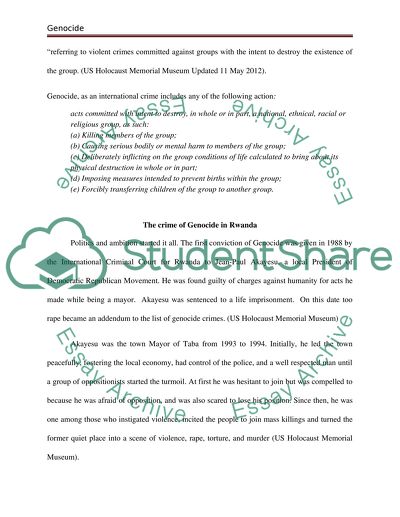Cite this document
(“Genocide in Rwanda and Burondi Assignment Example | Topics and Well Written Essays - 2000 words”, n.d.)
Genocide in Rwanda and Burondi Assignment Example | Topics and Well Written Essays - 2000 words. Retrieved from https://studentshare.org/history/1460289-genocide-in-rwanda-and-burondi
Genocide in Rwanda and Burondi Assignment Example | Topics and Well Written Essays - 2000 words. Retrieved from https://studentshare.org/history/1460289-genocide-in-rwanda-and-burondi
(Genocide in Rwanda and Burondi Assignment Example | Topics and Well Written Essays - 2000 Words)
Genocide in Rwanda and Burondi Assignment Example | Topics and Well Written Essays - 2000 Words. https://studentshare.org/history/1460289-genocide-in-rwanda-and-burondi.
Genocide in Rwanda and Burondi Assignment Example | Topics and Well Written Essays - 2000 Words. https://studentshare.org/history/1460289-genocide-in-rwanda-and-burondi.
“Genocide in Rwanda and Burondi Assignment Example | Topics and Well Written Essays - 2000 Words”, n.d. https://studentshare.org/history/1460289-genocide-in-rwanda-and-burondi.


